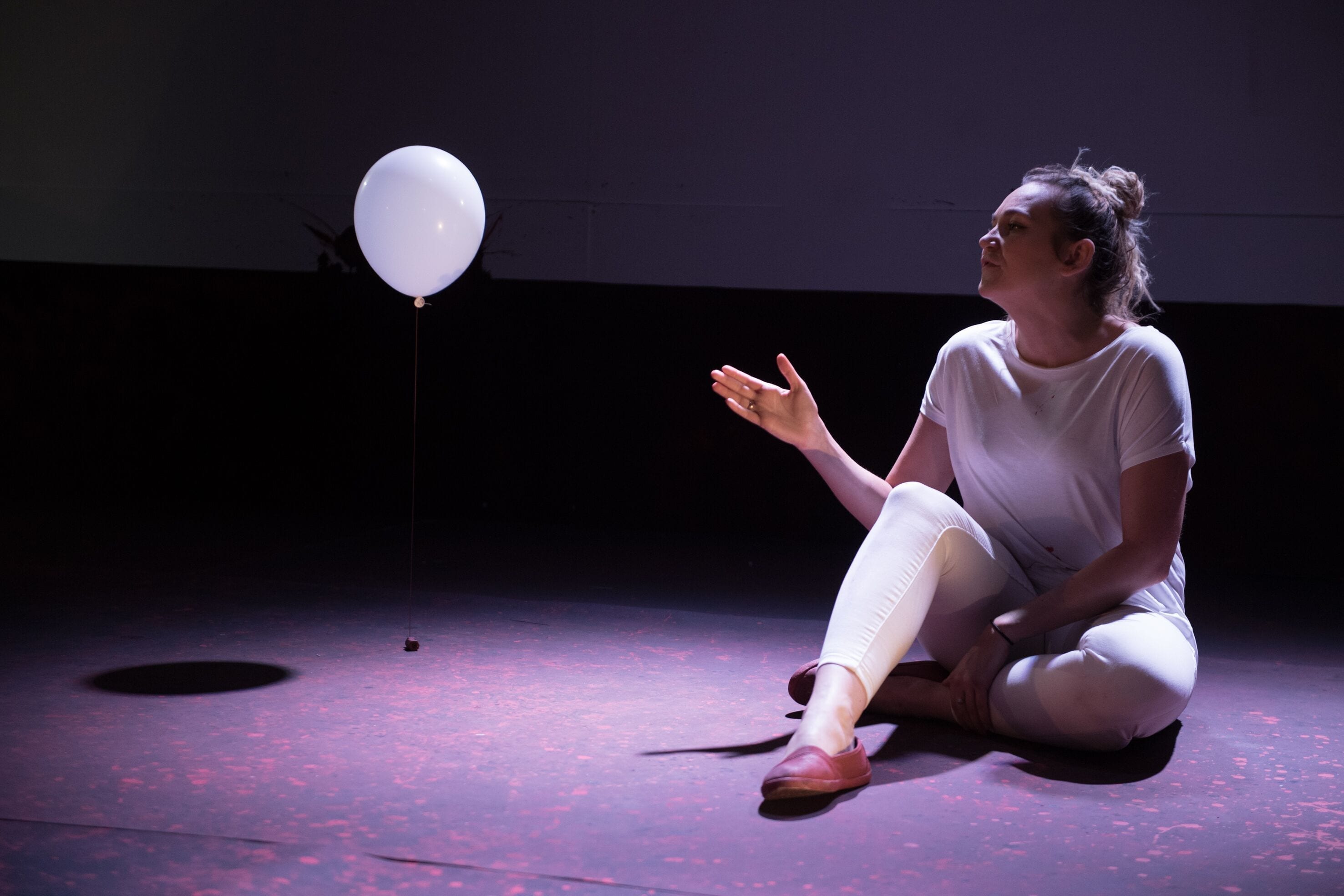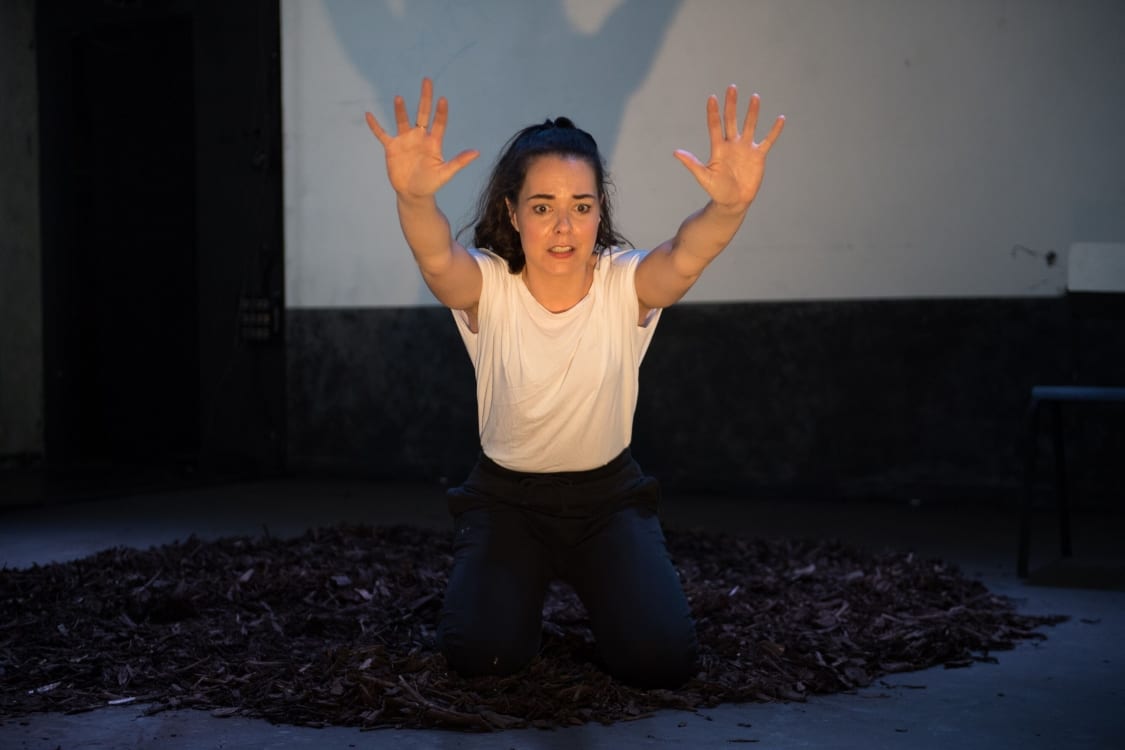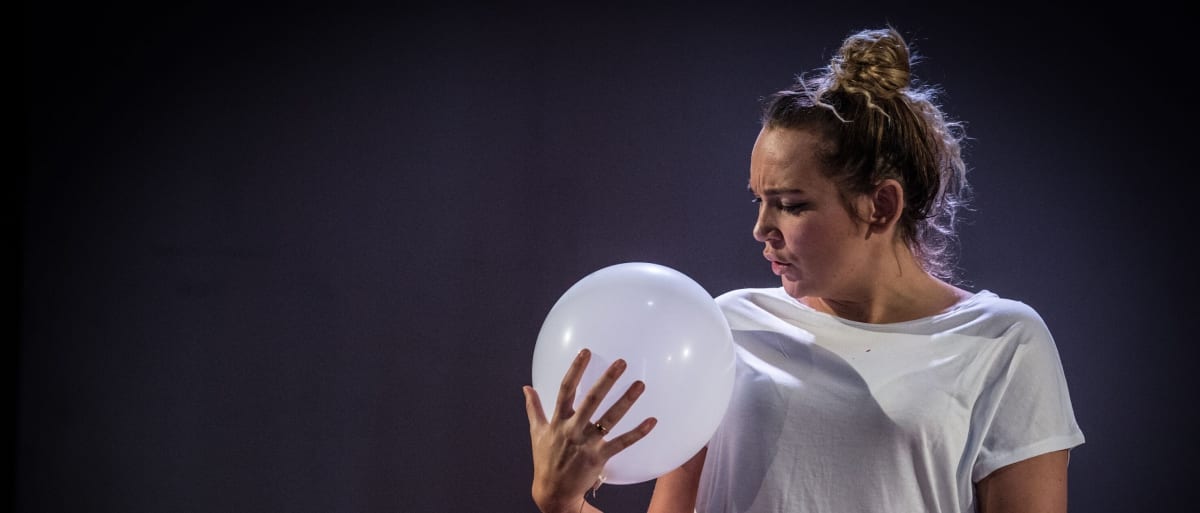Box Clever and Killymuck come as double bill at the Bunker. The two one-woman-shows give a valid insight into the life of women born at the lower end of the class system of the UK.
In Box Clever, Redd Lily Roche (Marnie) gives an amazing performance on motherhood, sprinkled with symbolism in the props and the costumes. Marnie’s daughter is portrayed as a helium filled balloon, kept on the ground by a little rock. The balloon itself is the head of the child. The way Marnie picks her up and talks to her is enacted in such a brilliant was that the props becomes human in its movements. The audience gets an excellent image of the child and its character, even through such a minimalistic device.
Marnie’s costume is all white, everyday skinny jeans and a white top. Already at the beginning, there are blood stains spread across her that seem to increase throughout the play. The innocence of the character and the harm she experiences through her environment are perfectly indicated.
The performance takes some time to get into its stride at the beginning. The first few scenes lack some explanation and jump in between different scenarios without offering too much background knowledge to the audience. It is a bit of a puzzle that takes too long to become clear, which is a shame as the play gets better through understanding the past and present of Marnie. However, that is soon forgotten as Roche takes the audience away with a brilliantly emotional performance.

Monsay Whitney wrote an engaging play that manages to appropriately address the negative labelling of people in need of help. Marnie is treated as if she was to blame for all her misfortune by aid workers and the police. Further, she expresses that she is viewed as an unstable character with mental health issues. Though it seems as if her overwhelming emotions are rather circumstantial, not pathological.
The patronising behaviour of those in charge of Marnie’s protection are soon revealed to be a tool to avoid responsibility and to keep mistakes of the past hidden. While the play does not have a conclusion or and end, it does not feature an open ending. The situation is clear to the audience. This will bring you to the verge of your tears as the reality of the performance cannot be denied.
Definitely a five-star performance!
Killymuck takes a different approach to a similar situation of negligence. However, the plot is the fictional autobiography of a girl growing up in the ’70s Northern Ireland in a council estate. Her family survives on benefits, and even among the poor she is the poorest. The impact her circumstances have on the success in her life are explained through a sociological approach. This play is definitely not just a play, but an academic lecture on the making and maintaining of social inequality.
Niamh’s (Aoife Lennon) story shows that support is mainly given to those who already receive support. She is labelled as dumb and incapable from the start, even though she does her best to fight for a better future. Yet, her roots keep pulling her back to where she started. A grim council house where little care is given to her well-being.

The story itself is often interrupted, to talk about the wider implications of the themes shown. Through statistics and sociological research results, the audience is given a wider picture. Such an amazing format should be repeated by all means, as the factual knowledge that is communicated corresponds with the emotional and human aspects shown through Niamh’s story.
The staging for both plays has similar outlines. The performance area is surrounded by tall lamp posts, that are luminated from bottom to top. Therefore, the stage light also falls onto the audience. The performances can now directly address viewers and make very direct eye contact. Especially for Killymuck, this is a great feature, as this makes the lecture like sequences more involving.
Overall, Killymuck is an incredibly educating event, that does not only show issues in society but gives you the mental tools to properly discuss them and to get involved in you local politics for change. Aoife Lennon gives the audience concrete information on how the problems addressed can be tackled and what each individual can do to have an impact.
The two shows can be viewed separately, but it is highly recommended to attend both in one go!

